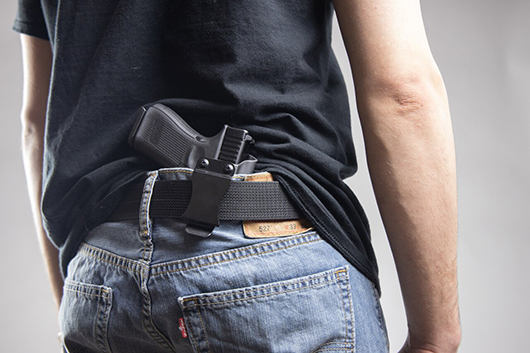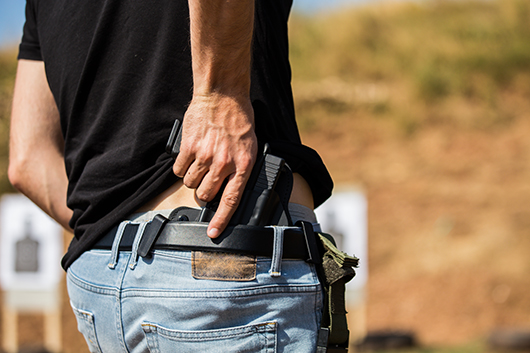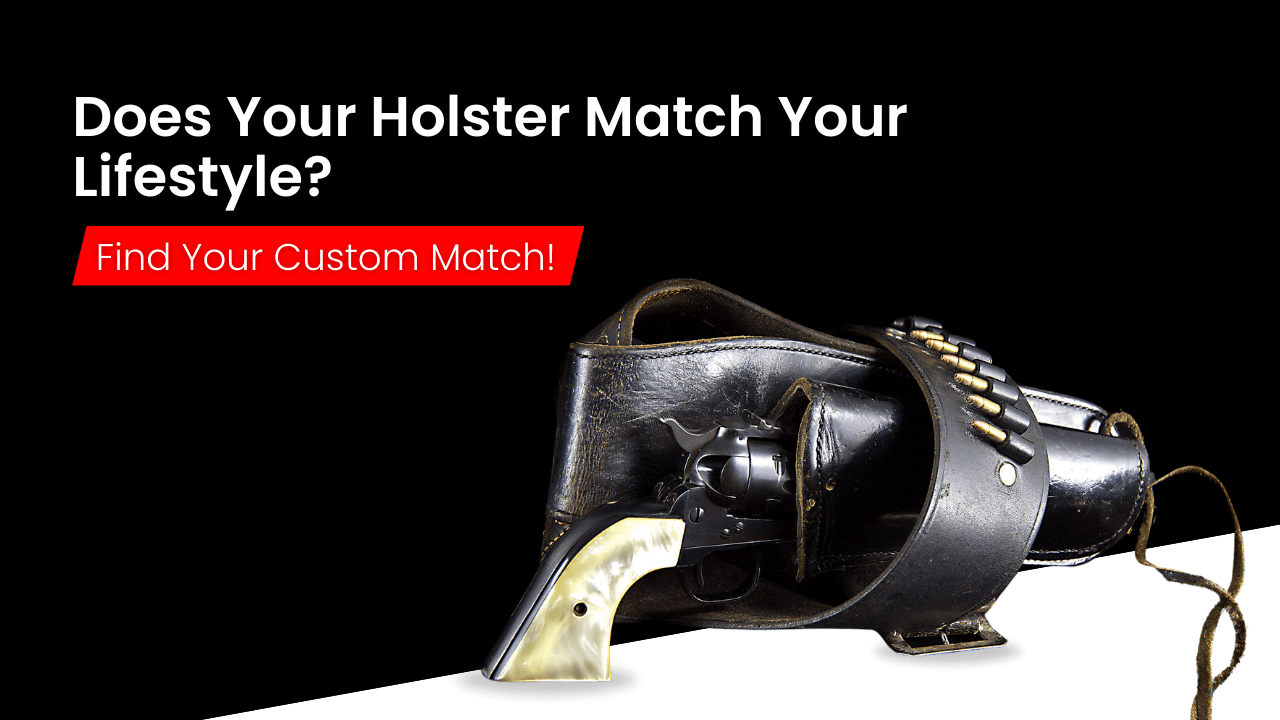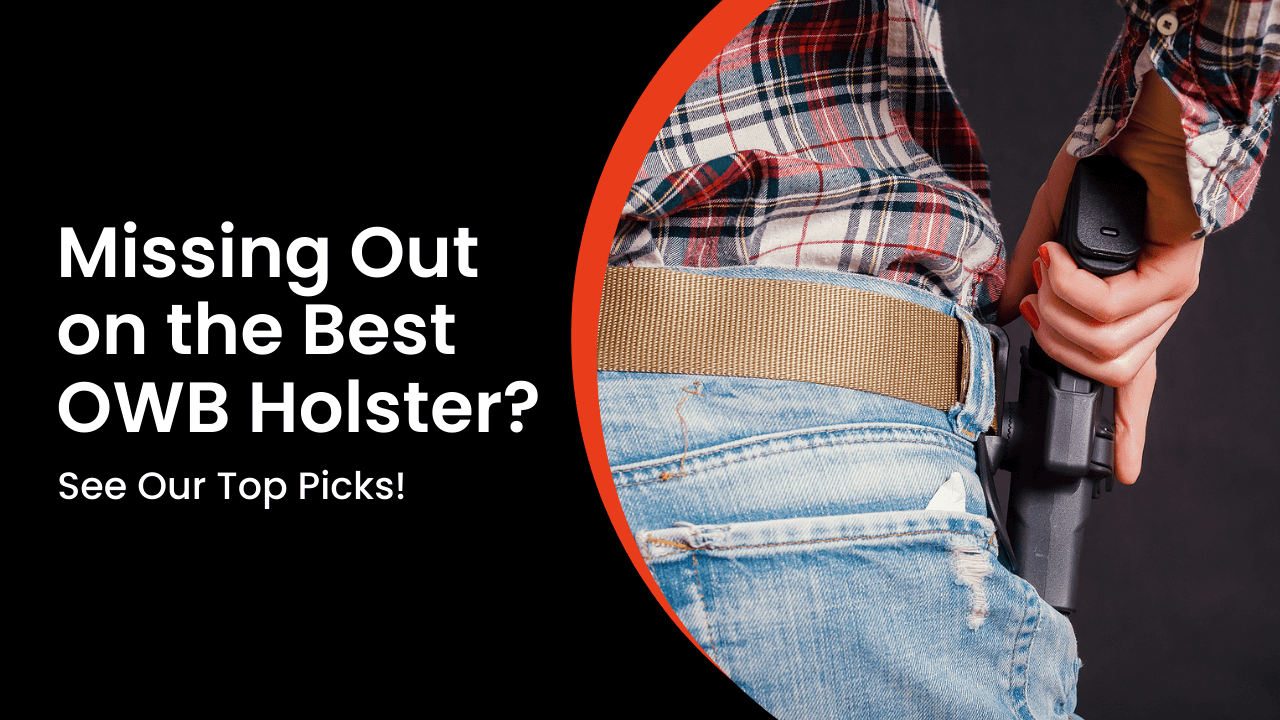Methods of Carrying a Handgun
Dec 2nd 2020

So you’ve decided to carry a gun, but how and where should you carry it? These are essential questions that depend on several factors — there are numerous concealed carry methods to choose from.
When carrying a concealed handgun, you should decide the most comfortable and accessible option for you. Let’s discuss some of the methods and their pros and cons so you can make an informed decision.
- What kind of gun do you intend to carry? Your method of carry will be dictated, to some extent, by your choice of weapon. A full-size service pistol, such as a Glock 17 or Smith & Wesson M&P will probably not be a good choice for an ankle holster compared with a North American Arms Mini-Revolver.
- How you dress affects what kind of handgun you can conceal and how. An OWB holster, for example, is less viable for concealed carry without a separate cover garment. This is also affected by the climate.
- Body type. If you have a pronounced belt line, carrying a pistol inside the waistband and at 1 o’clock may not be viable for you.
Hour-hand positions on a clock face are regularly referenced when discussing carry positions. This analogy is derived from military time direction, where a clock bearing would be used to determine an object’s position and direction.
In the context of carrying a concealed handgun, imagine that your waist is the face of a clock. 12 o’clock corresponds to your navel and 6 o’clock to the small of your back. A strong-side holster for a right-handed person is 3 o’clock, and appendix carry is between 12 and 3 (1 o’clock is common).
This is particularly relevant to wearing a holster on a dedicated gun belt, whether IWB or OWB.
IWB and OWB
When using an IWB holster, the holster is carried between the waistband and the body. This method has the advantage of allowing for increased concealment. The pants partially hide the holster, so it prints less. However, you may have to wear a pants size up to accommodate the increased bulk.
An OWB concealed-carry holster, on the other hand, allows you to carry a relatively large-sized gun without discomfort or the need to change clothing sizes. Bear in mind that you do sacrifice some concealability when opting for OWB over IWB.
Strong Side

If you’re right-handed, your strong side is at the 3 o’clock position and corresponds to your right hip. This position is one of the most popular because it affords a good balance between accessibility, concealment, and retention. When drawing with your strong hand, you’re also able to angle your body in such a way as to keep your gun as far away from the threat as possible, using your support hand in a defensive posture.
If you wear a cover garment, you’ll have to sweep it away to gain access.
If you’re left-handed, your strong side would be at 9 o’clock. There’s no tactical disadvantage to the left-handed variant; the actions are simply mirrored.
Appendix
This method of carry places the pistol to the left or right of your navel — somewhere between 12 o’clock and 3 o’clock if you’re right-handed. The primary advantages of this position are access and speed. This is considered one of the fastest methods of carry, and your pistol is directly in front of you at all times. No awkward motion is required to retrieve it.
This is a far more natural location to draw a pistol from. When paired with an in-the-waistband holster, this is referred to as AIWB.
But it does have its disadvantages. Appendix carry is often perceived to be an unnecessary hazard. This is due to the direction in which the muzzle is pointed. While it is true that the consequences of an unintentional discharge are potentially more serious when carrying a gun in this manner, you can minimize the risk through training and proper holster selection.
While not strictly a disadvantage, you may find this method of carry difficult and uncomfortable if your abdomen protrudes past your belt line noticeably.
Cross-Draw
In a cross-draw set up, the holster is placed with the butt forward on the weak or support side and is drawn from with the strong hand. Unlike appendix carry, the cross-draw holster often points the muzzle away from your body. As a result, this method of carry is often seen as safer.
Not as fast as dedicated appendix carry when standing, when sitting, this carry method offers a shorter draw and is seen by some as optimal — both for speed and comfort. If you have a desk job or spend hours driving each day, this may be worth considering.
Shoulder Holster
If your preferred manner of dress includes wearing a suit, you’ve probably contemplated carrying a pistol in a shoulder holster. There’s something timeless, classy, or maybe even mysterious about carrying a handgun this way. Shoulder holsters often have magazine pouches located under the opposite arm.
While this can be a comfortable method of carry, regardless of whether you’re standing or sitting, it requires a jacket with a generous cut to avoid printing. You’ll have to be mindful of how you embrace other people — your elbows should remain down unless you want them to feel the pistol under your arm. This also isn’t the fastest option.
Always be aware of the direction that the muzzle is facing. Some shoulder holster designs cant the pistol downward, but others point the muzzle horizontally, which covers anyone standing directly behind you.
Small of the Back
Carrying a gun in the small of the back is one of the most concealable options because the gun is nestled against the arch of your back, reducing the extent to which it protrudes. However, this is not the most comfortable way to conceal your gun if you spend hours sitting at a desk or in a car every day. There’s also the risk of injury if you fall backward.
Ankle Holster
Often associated with police detectives, an ankle holster can be convenient for carrying a back-up gun, such as a subcompact semi-automatic pistol or snub-nosed revolver. You’ll have to ensure that you’re wearing pants that can provide sufficient space to avoid printing and the disclosure of your weapon.
This method is unsuitable for carrying your primary sidearm; it’s neither fast nor efficient.
Pocket Carry
If you’ve opted for an easily concealable ultra-compact handgun, you may decide to carry it in a pants pocket rather than on your belt. You should still carry the gun in a holster designed to be worn inside a pocket. This is for both legal and practical reasons. A holster provides both the retention and safety that you need when carrying a gun.
Final Thoughts
Our inventory at Incognito Concealment includes a wide range of IWB and OWB Kydex holsters designed to fit dozens of handguns and available in 30 colors and patterns. Call us at (586) 333-4240, and we’ll help you decide which of our products meets your needs.











